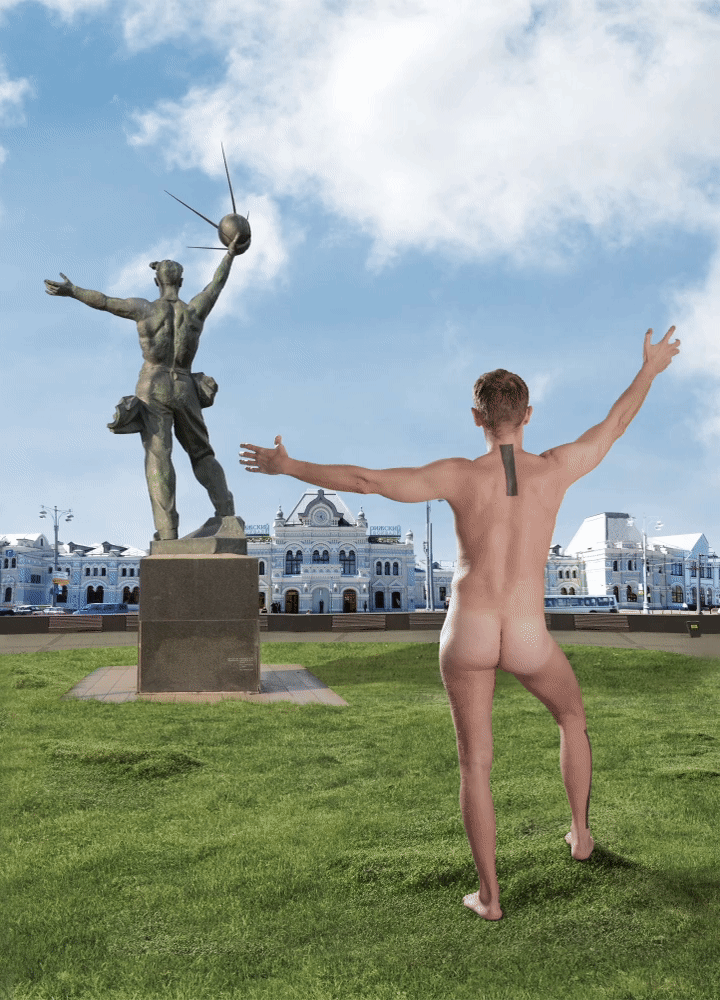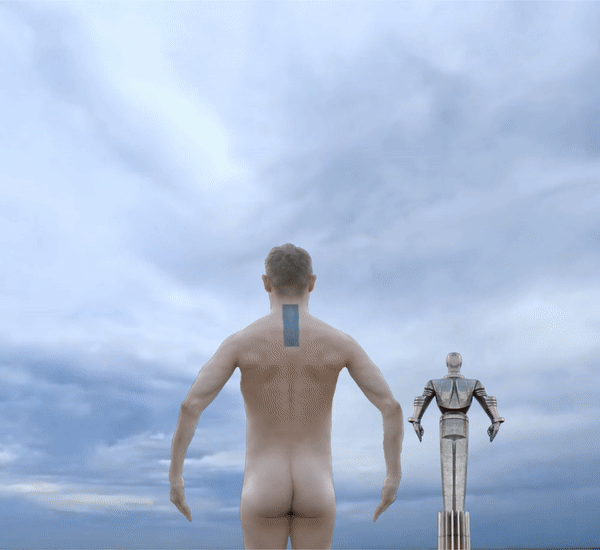POSTMONUMENTS
Late Soviet heroic monuments are a very special catch for a connoisseur. If you look at them from the perspective of a person born in the late Soviet era (essentially making this person a peer to those monuments which were erected in the 1970s-80s), they seem fictitiously grandiose and demonstrate a certain fake splendor. However, they wouldn’t look anything like that to people born from the 1990s onwards. For them, the Gagarin monument in Moscow (1980) is pure ideology: free beauty and exotic elegance, making the whole picture an untainted reference to postmemory studies.
Postmemory builds a bridge to postirony: that’s how a body of performance may easily complement monumental bliss. That’s how the performative body dominates the monument. It gives orders, makes choices, and changes landscapes. The human body is either in front of or behind the monument, navigating its new poses, positions, and meanings while returning the liveliness to what was set in stone several decades ago and hopelessly died then.

